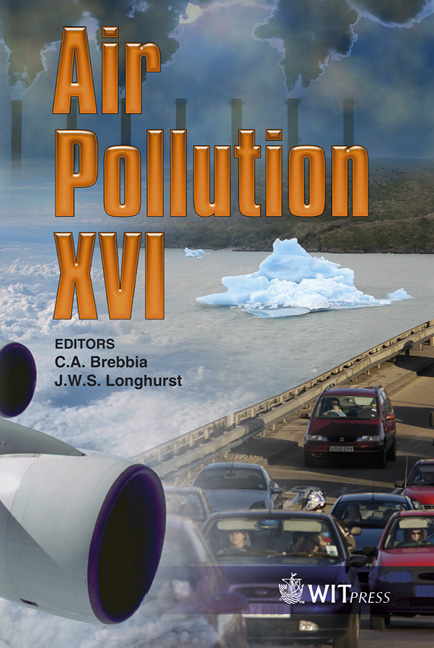Evaluation Of Indoor Air Treatment By Two Pilot-scale Biofilters Packed With Compost And Compost-based Material
Price
Free (open access)
Transaction
Volume
116
Pages
10
Page Range
499 - 508
Published
2008
Size
475 kb
Paper DOI
10.2495/AIR080511
Copyright
WIT Press
Author(s)
M. Ondarts, C. Hort, V. Platel & S. Sochard
Abstract
The interest in Indoor Air Quality (IAQ) has increased this past decade. Indeed, many studies focused on Indoor Air analysis have pointed out many potential health risks and non-negligible associated costs. But only a few studies have dealt with the adaptation of industrial processes like sorption or photocatalysis and with development of new processes. Moreover, the use of these processes is still limited by the characteristics of this pollution: lots of components with different properties (Volatile Organic Compounds (VOC), aldehyde, inorganic compounds), competition phenomena between these pollutants, and low concentrations. Biofiltration is currently used to treat high flow rate effluents with low concentrations and various pollutants, so this technology seems adapted for IA treatment. This study focuses on the evaluation of the performance of biofilters packed with compost and compost-based material (a mixture of compost/activated carbon). Indeed, compost is a natural material that possesses a lot of microorganisms, as well as good physical properties (water retention, pH) and nutriment content. The model effluent is constituted of ten compounds (aldehyde, aromatic, chlorinated, inorganic...) at low concentrations (sub-ppmv), which have been chosen for their ubiquity in indoor environments, their different physical and chemical properties (solubility, vapor pressure, biodegradability) and their potential health risks in chronic exposures. The pilot scale is constituted by a gas generator (permeation module) feed with high quality zero air and two biofilters with compost or compost/activated carbon (AC) based-bed material. VOCs are analysed by Gas Chromatography/Mass Spectrometry coupled with a cryogenic preconcentrator. The first part of this study has demonstrated the possibility of generating a continuous sub-ppmv pollutants mixture. A simple analysis method that demonstrates this adaptation to this range of concentration is presented. Keywords: Indoor Air, VOCs, biofiltration, sub-ppmv level, model effluent.
Keywords
Indoor Air, VOCs, biofiltration, sub-ppmv level, model effluent.





